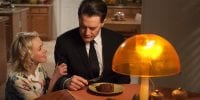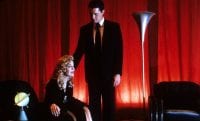“Man is out of nature and hopelessly in it; he is dual, up in the stars and yet housed in a heart-pumping, breath-gasping body that once belonged to a fish and still carries the gill-marks to prove it. His body is a material fleshy casing that is alien to him in many ways—the strangest and most repugnant way being that it aches and bleeds and will decay and die. Man is literally split in two: he has an awareness of his own splendid uniqueness in that he sticks out of nature with a towering majesty, and yet he goes back into the ground a few feet in order blindly and dumbly to rot and disappear forever.”
― Ernest Becker, The Denial of Death
There was a great beauty in the original title sequence for Twin Peaks. The soaring majesty of mighty pine trees and roaring waterfalls was juxtaposed with the mesmerizing vision of the sawmill, its blades pouring forth showers of fiery sparks as they were sharpened. It seems David Lynch finds beauty in both nature and industry. This duality has grown to become a core theme in The Return. The show is full of images of nature – trees, owls, waterfalls, rivers. But it is also full of industry and technology – The Packard Sawmill, strobing lights, crackling electricity. These two sets of imagery are being used to explore the idea that man is rapidly moving out of harmony with nature, and that this detachment could be a dangerous state of affairs.
This dualism of nature versus technology is echoed in many of the thematic oppositions explored in The Return: growth versus destruction, creation versus consumption, traditional wood-whittling pleasures versus modern high-tech desires, patience versus greed, enjoying versus wanting, love versus fear. The list goes on. In my column last week, I explored the possible impact of ancient Indian texts on Lynch’s work. It is interesting to note that those same Hindu philosophies also teach that man’s attempts to control, conquer and dominate nature move him away from his true spiritual path. The Upanishads explain that the five great elements of nature (space, air, fire, water and earth) make up everything in the world, but they also compose the human body. In Hinduism, there is no separation between man and nature, they are one and the same and should exist in harmonious balance.
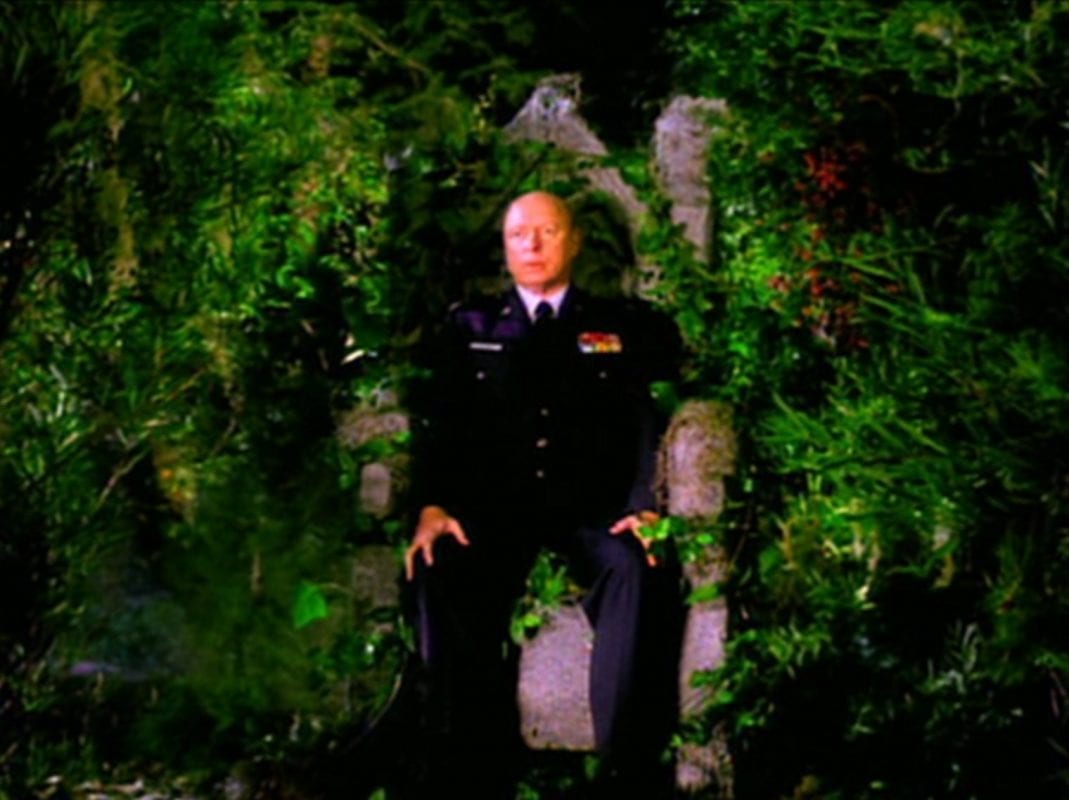
The other side of this coin is the Black Lodge, a place strongly associated with crackling electricity, roaring fire and stark strobing electric lights. If the White Lodge is aligned to nature, the Black Lodge is closer to industry and technology. Among the denizens of the Black Lodge are the nightmarish, blackened figures of the Woodsmen – men whose job it is to fell trees. They are also shown in the memorably surreal Convenience Store sequence in Part 15 to operate mysterious humming, sparking machines – underlining their association with electricity.
While examining his map with Sheriff Truman in Part 11, Deputy Chief Hawk describes electricity – the force that drives the gadgets all around is – as “a type of fire”, but The Return is obviously not the first work to link fire with technology. The Greek myth of Prometheus stealing fire from the Gods and presenting it as a gift to humanity has long been interpreted as representing the moment that man left his natural state and moved towards the enlightened, modern human condition. Plato in particular has linked this story to an awakening in man – the birth of his ingenuity, creativity and inventiveness. And of course, the Prometheus myth is echoed in the fall of Adam and Eve, where accessing forbidden knowledge led to the first humans being cast out from their harmonious existence in the paradise Garden of Eden.
The cryptic and mysterious verse spoken by Philip Gerard/MIKE in Cooper’s dream sequence, during the first season of Twin Peaks, also makes implicit connections between fire and forbidden, arcane knowledge: “Through the darkness of futures past, the magician longs to see. One chants out between two worlds. Fire walk with me.” This poem joins the dots between fire and the dark forces of the Black Lodge, implying that humanity’s newfound Promethean insights can come at a terrible price.
Prometheus also has some interesting resonances in The Return, the most powerful of which came in Part 8’s flashback to the Trinity nuclear bomb test. This moment represents the pinnacle of man’s destructive ingenuity – the ultimate extension of Prometheus’s theft, when man harnessed his technological capability to split apart the atom, the very building block of nature. And by doing so, he unleashed the most terrible fire of all.
It is with good reason that the most respected biography of Robert Oppenheimer – the father of the atom bomb – is called American Prometheus. In the aftermath of the first atomic explosion, the American physicist famously said: “Now I am become Death, the destroyer of worlds”. Interestingly, his quotation comes from Hindu scripture, a philosophy the scientist found fascinating.

Bringing us back round to Hinduism highlights another set of interesting parallels. In The Roots of Hinduism, author Asko Parpola describes the mythological character Mātariśvan as “a close parallel to the Greek figure of Prometheus”. Exploring the origin and interpretation of the name Mātariśvan, he notes it has a “folk etymology associating the name with matar – ‘mother'”, as well as “atar – ‘fire'”. This mention of “mother” and “fire” together immediately conjures images of the Experiment (known by many viewers as ‘The Mother’), seen in Lynch’s atom blast sequence, birthing BOB in a stream of ectoplasm at the heart of the nuclear fire. Parpola goes on to explain: “I have no doubt the myth is also connected with the homophonous root math – “to whirl round, to rotate”. This link to whirling, rotating motions, in the context of The Return seems to suggest a connection to the swirling vortexes in the skies, acting as gateways to the Lodges, as well as the infamous fan in the Palmer household, a whirling object imbued with terrifyingly dark significance by several memorable sequences in both the series and the film Fire Walk With Me.
This consideration of man’s harnessing of elemental forces, his attempts to master nature, also calls to mind a famous phrase from Aesop: “It is with our passions as it is with fire and water, they are good servants, but bad masters.” When we ask fire to walk with us, we should proceed with care and caution, because the moment we become complacent, Nature reserves the right to rise up and remind us of her power.
Despite this warning, it is undeniable that bending nature to our will is also a force for great good, it is what separates us from animals and brings us advances in civilisation and society. The cutting edge of these unnatural advances in the 21st century is represented by all-pervading digital technology – in fact, the very device on which you are reading these words. Every year that passes brings new gadgets and advances to revolutionise the way we live.
It is notable that technology in The Return has been presented in a range of unusual and unsettling ways. It almost becomes a form of dark sorcery, in line with Arthur C Clarke’s famous third law: “Any sufficiently advanced technology is indistinguishable from magic”.
In this 21st century world of Twin Peaks, we see strange occult technologies that can hack FBI servers, hijack the alarms in a prison and remove tracking devices from vehicles with bewildering ease. In New York, the glass box, surrounded by advanced digital cameras and lights seems to act as a techno-portal to the mystical Lodge spaces – a perfect fusion of magic and technology. Later, Cooper’s dark doppelgänger Mr. C, seems hell-bent on stockpiling cellphones at every opportunity and the charred Woodsmen hijack a radio transmission, sending listeners dropping to the floor.
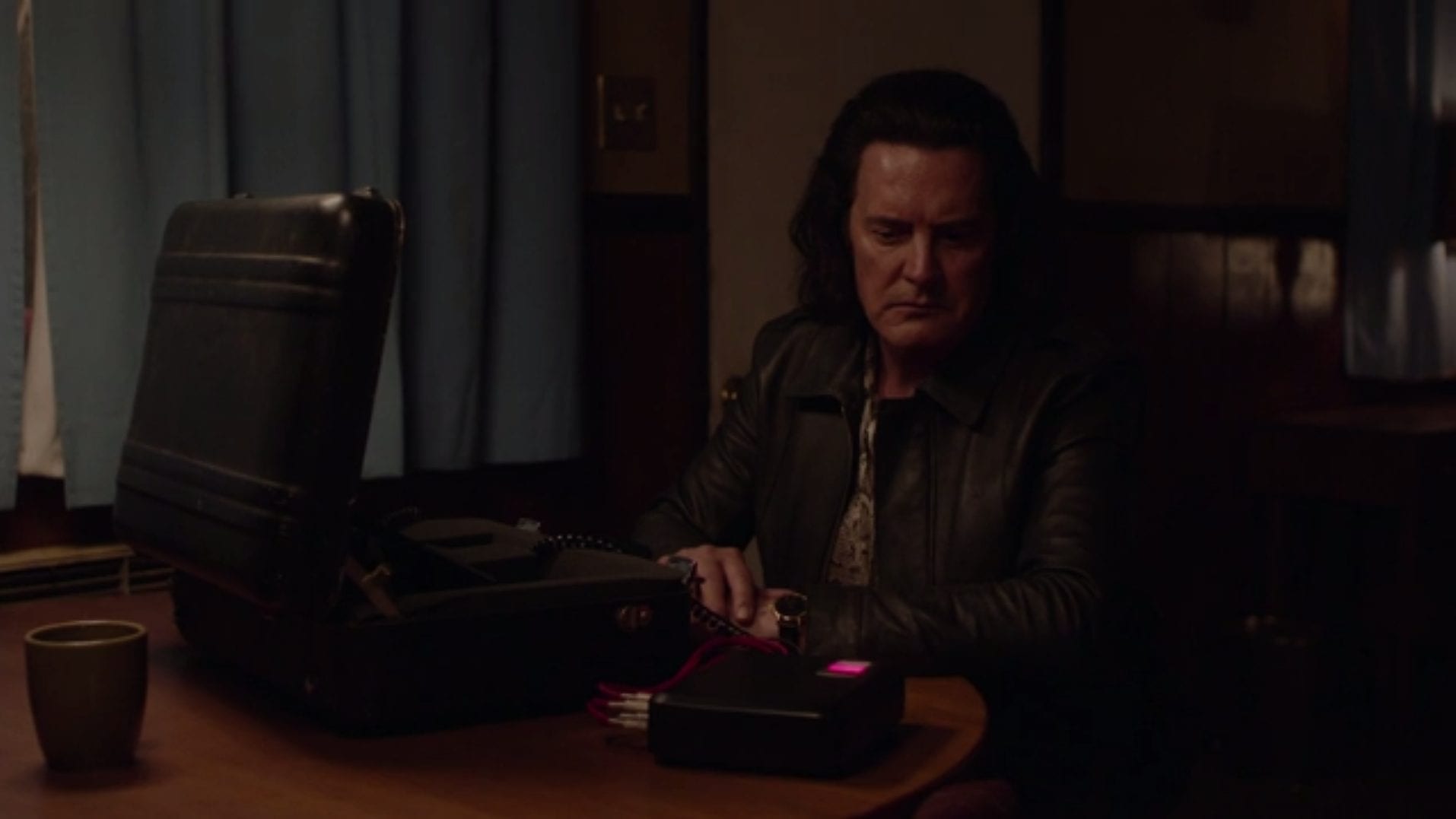
The laptops, sockets, wires and devices are familiar, but their workings become alien and mysterious, magical and disturbing, through the warped lens of The Return. It is no coincidence then, that one of the most innocent, pure and good characters in the series, Sheriff’s Receptionist Lucy Brennan, lives in mortal terror of mobile telephones.
An especially strange conjoining of technology and magic came in Part 15 as we were finally reintroduced to the legendary missing FBI agent Phillip Jeffries. His consciousness now appears to inhabit a gigantic steaming kettle known as The Device. This bizarre contraption seemed to strongly echo the plumbing and machinery featured in Eraserhead, Lynch’s first film, which was entirely played out against a nightmarish, bleak industrial backdrop.
TANGENT: was it just me or did Kettle-Jeffries look a lot like the caterpillar from Disney’s Alice in Wonderland – especially when he started puffing out numbers? Not sure where I’m going with this – would love to hear what you think.

But while electricity and other technologies are often portrayed as unnatural, dark elements, signifying humanity’s separation from the true path of nature, Twin Peaks also reminds us that sparks of electricity exist within us all. In the original series Cooper describes to Sheriff Harry Truman how the mind forms dreams: “acetylcholine neurons fire high-voltage impulses into the forebrain,” he said. “These impulses become pictures, the pictures become dreams.” Dream spaces, so often shown as frightening and so strongly associated with the Black Lodge, are actually caused by electricity in our brains. But we also know that “dreams sometimes hearken a truth”, so the issue is not completely clear cut. Our electrical dreams, like our electronic technology, may be unsettling, but they can also be a positive force as harbingers of enlightenment.
Dualities in Twin Peaks are – unlike the floor of the Red Room – never simply black and white, no matter how appealing this simplistic interpretation may be. It is not as clear-cut as “nature is good”, “technology is bad”. So while owls are obviously a part of the natural world, they are also strongly associated with dark spirits and Black Lodge entities in the show’s mythology. And while trees are often used in the programme to signify natural goodness – in other sequences, such as the drug-fuelled nightmare of Steven and Gersten in Part 15, they become an ominous foreboding presence. Similarly, trees are shown to be present at the woodland entrance to the Black Lodge – although the bare, skeletal forms of the Sycamores at Glastonbury Grove are a stark contrast to the verdant beauty of Jack Rabbit’s Palace. At other times, nature is shown to be just as hungry, brutal and destructive as mankind – we only need to look at the violent imagery of lions feeding in the documentary on Sarah Palmer’s TV to know this.
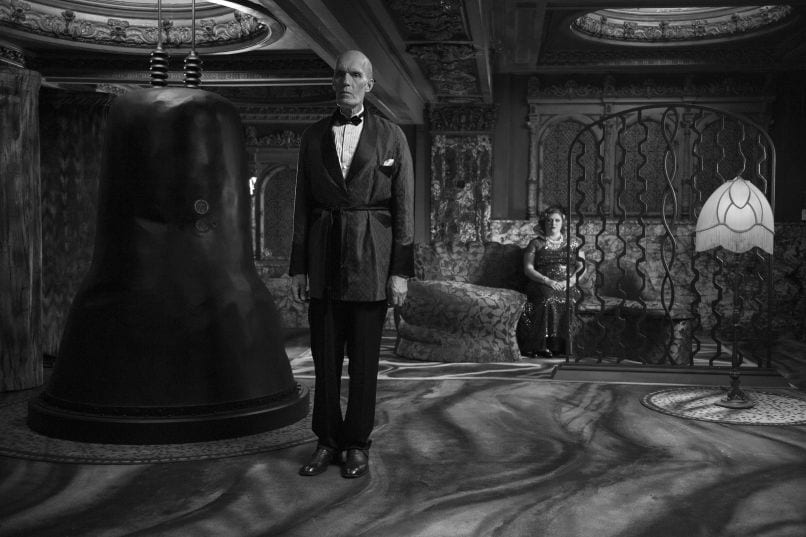
And just as there are associations between the Black Lodge and nature, so too the White Lodge forces are shown to work with technology. The Fireman’s strange alarm bells seen in Part 8 and the levers and sockets in the floating ‘Mauve Zone’ are just a couple of examples. Entities linked to both Black and White Lodge spaces are able to travel through electrical wires and it seems the FBI are just as fond of control panels with blinking screens as their adversary Mr. C. Most recently, Dougie-Cooper’s major revelation, his awakening in Part 15, was (FINALLY!) brought about through contact with technology – watching a scene from Sunset Boulevard on a television.
So it seems technology in The Return – and, by association, man’s drive to rise above nature rather than exist within it – is truly a double-edged sword. This is a tension that exists at the very heart of modern life – humanity’s progress is dazzling, our achievements wondrous to behold, but every advance brings new dangers and seems to move us away from a harmonious, simple, natural state. We must each make our own choices and maintain our own balance, much like Norma Jennings at the RR Diner. Do we choose franchises, profits and progress? Or do we choose natural, organic ingredients and love?
As always, we’d love to hear what you think about these ideas. Are there any important tech vs nature examples I’ve overlooked? Do you think my interpretation is wide of the mark? Let us know! Join the conversation on Facebook, Twitter, or leave a comment below.

